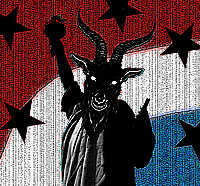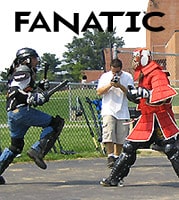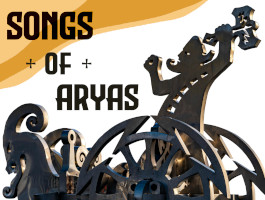Throughout the course of Incubus I have suggested various tribalistic perspectives as more functional than our own postmodern outlook. Perhaps it is this very postmodern view—seemingly teetering above a vast pervasive social construct of a kind that had not previously been imagined, let alone expected—that permits us to shed some of our fathers’ modern baggage and consider the primal ways of life once again.
What is tribalism?
What is a tribe?
A tribe is an organic polity with the following characteristics:
1. A homeland, whether occupied, claimed in absentia, or regarded as a place of origin, such as Cornwall, Scotland, Norway, etc., not an entire continent, which represents postmodern globalist thinking, not a tribal worldview
2. A culture, including a common root metaphysical view or religion, but not necessarily a current homogenous faith. The Mongols for example were animists who gradually adopted Buddhist, Christian and Islamic faiths while remaining identifiably Mongols
3. An ethnic lineage. An ethnic identity among tribal people does not encompass the modern view of race as humanity being grouped into five vast gene pools, but is rather tribal, ethnic, and is rooted in a common descent or ascent. ‘White’ is not an ethnicity, but a macropolitical declaration. Basque, Sicilian, Tuscan, Cornish, Welsh, Albanian, these are ethnicities.
4. Living collective traditions such as metaphysical cults, rites of passage, masculine societies, and the war band
5. Living autonomous traditions such as dreaming, vision quests, deed-based honor systems, and forms of single-combat such as wrestling and dueling
Generally speaking tribal life for the individual involves a broader skill set, more autonomy, greater responsibility, closer association with a broader age group, and more immediate access to mentors than life in a nation state. The tribe though serves the same basic function as the nation state in that it provides military, economic and ideological structures to guide the individual and the collective.
The earliest states diverged from the tribal model with the accumulation of surplus resources, which immediately resulted in economic stratification and material-based rather than merit-based hierarchies.
The first modern experiments with tribalism were urban street gangs, which mimic the war band. Such gang structures have expanded—beginning with the motorcycle club movement in the 1950s—to become regional, national, and international fraternities, thus mimicking internal and pan-tribal societies more closely than actual tribes. Engagement in any of the 8 traditions listed under 4 and 5 above may be regarded as engaging in a form or aspect of tribalism, and are unlikely to mirror the primitive person’s experience as a member of a tribe, but rather as a member of one of its ritual or fraternal bodies.
It should be understood that the nation state is a technologically enabled species of social organism [an artificial polity] dedicated to cannibalizing, absorbing, marginalizing, and extinguishing its organic equivalent, the tribe. Collective tribalism is no more compatible with the nation state than coyote packs are with wolf packs, leaving the coyote in wolf pack territory practicing a more solitary life way. However, just as the coyotes of Yellowstone ‘packed up’ and enjoyed great collective success when wolves were eradicated, one might expect the return of the tribe as an organic polity whenever and wherever the nation state fails; and conversely the ruin of the tribe whenever the nation state rises.











